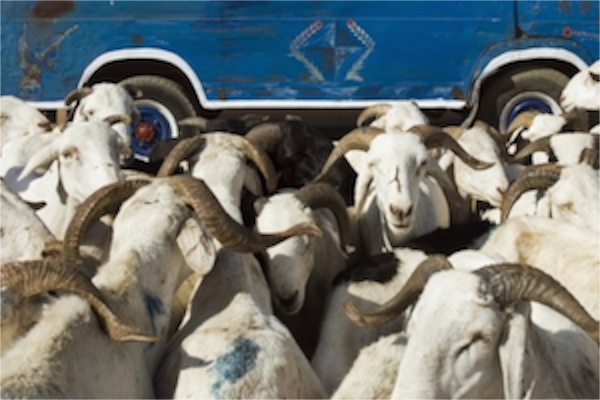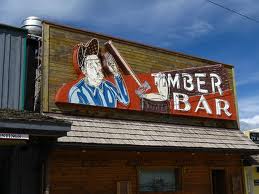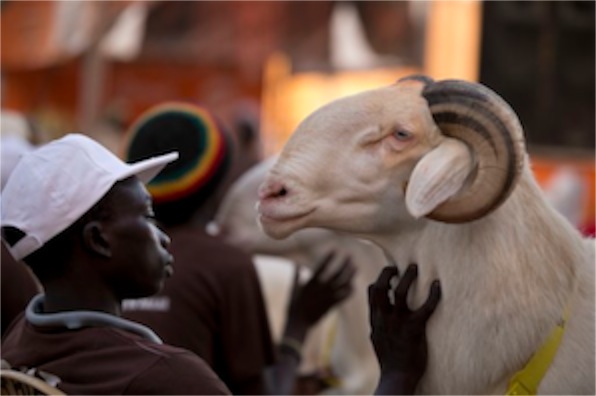Sheep
12/10/12 05:23

“The Senegalese are really into their sheep,” says Fadilou Keita. Keita, who is 28 years old lives with six sheep in his Dakar home. He is a financial analyst with an iPad in one hand and the other hand in the mouth of a sheep. “This is my passion,” he says.
So, if you don’t remember, I have a different relationship with sheep in my life. I grew up in Sweet Grass County, Montana, once known as the wool shipping capital of the world. There were plenty of sheep ranchers in our community and lots of sheep on what we called the “government pastures” in the high country of the Boulder Valley and other areas of the Gallatin National Forest. I’m sure that there were plenty of lambs brought into homes, especially when a spring blizzard lined up with early lambing. In fact we knew that when they are tiny, baby lambs can’t climb out of a bathtub. This is information that I have never had reason to test or use, but it seemed to be common knowledge in the culture in which I grew up. People took sheepherding seriously. It was commonly known that the Court Bar was the hangout for sheepherders and cattle buyers had better get their drinks at the Grand Bar down the street. To cross that boundary was to invite a fight. I was about eight years old when the last fight to my knowledge that involved stepping out into Main Street and firing pistols at each other erupted. Only one of the combatants died.
 The Court Bar is no longer there. The Grand is the anchor of an upscale remodeling of the entire hotel. The Timber bar is still in a prominent position on Main Street. You can guess the profession of that establishment’s historic clientele. Hint: the sign has a guy wearing suspenders wielding an axe. The old Moose Club is now a place that serves mostly fancy hamburgers and deep fried green beans with something about a lizard in its name. I could go on and on about the bars in the town where I grew up. We had a lot of churches, but there were always more bars than churches in my town.
The Court Bar is no longer there. The Grand is the anchor of an upscale remodeling of the entire hotel. The Timber bar is still in a prominent position on Main Street. You can guess the profession of that establishment’s historic clientele. Hint: the sign has a guy wearing suspenders wielding an axe. The old Moose Club is now a place that serves mostly fancy hamburgers and deep fried green beans with something about a lizard in its name. I could go on and on about the bars in the town where I grew up. We had a lot of churches, but there were always more bars than churches in my town.  This has little to do with sheep, but sheep were an important part of my town. After all the mascot of the local high school is still the sheepherder. The school logo sports a bearded buy in an old hat and kerchief smoking a pipe. Smoking may be banned in all of the schools in Montana, but in my hometown, the high school mascot still smokes his pipe. It was good enough for us when we were kids and there’s no reason to change it now, I guess. I know there’s no local support for taking the pipe away.
This has little to do with sheep, but sheep were an important part of my town. After all the mascot of the local high school is still the sheepherder. The school logo sports a bearded buy in an old hat and kerchief smoking a pipe. Smoking may be banned in all of the schools in Montana, but in my hometown, the high school mascot still smokes his pipe. It was good enough for us when we were kids and there’s no reason to change it now, I guess. I know there’s no local support for taking the pipe away.20 miles down the road is Reed Point, still in the county, and home to the annual Great Montana Sheep Drive, featuring hundreds of woolies charging down Main Street. Main Street in Reed Point is only six blocks long. Sometimes they have to turn the critters around and run them back up the street in the opposite direction. The occasion does involve a lot of beer and a high demand for porta potties. Eat your heart out Pamplona.
All of which is to say that I have shoveled my share of sheep manure. I’ve stepped in the stuff, fallen in the stuff, and washed it out of my hair. I know the reek of ram urine. The desire to have a pet lamb in my home has never been an experience that I have sought.
But pet sheep are a big deal in Senegal according to Yahoo! News. There sheep are given names and kept inside homes. Ousmane Ndiyae could rent out the upper story of his home for at least $500 a month. Instead it is home to their beloved ram Billai and 10 other sheep. The animals are on the top story of the building so they can have access to a sunny outdoor terrace well above the commotion of buses and vendors below. They are fed leftovers from the family table in addition to a mixture of corn, millet, beans and sorghum.

We have a cat who lives in our home. The animal is pleasant enough, and I admit that I have grown attached to it. But it is a bit of a chore to care for. The litter box needs to be emptied regularly. There is food and clean water to provide. The cat sheds on everything, which means more housework. And it is an expert at tipping over any container left out in the garage. It is a challenge to keep the cat away from drying epoxy or fresh varnish when I am building boats.
But today, I’m thankful for the cat. Our daughter brought it home because she fell iin love with it. Had we lived in Senegal, she might have come home with a lamb.